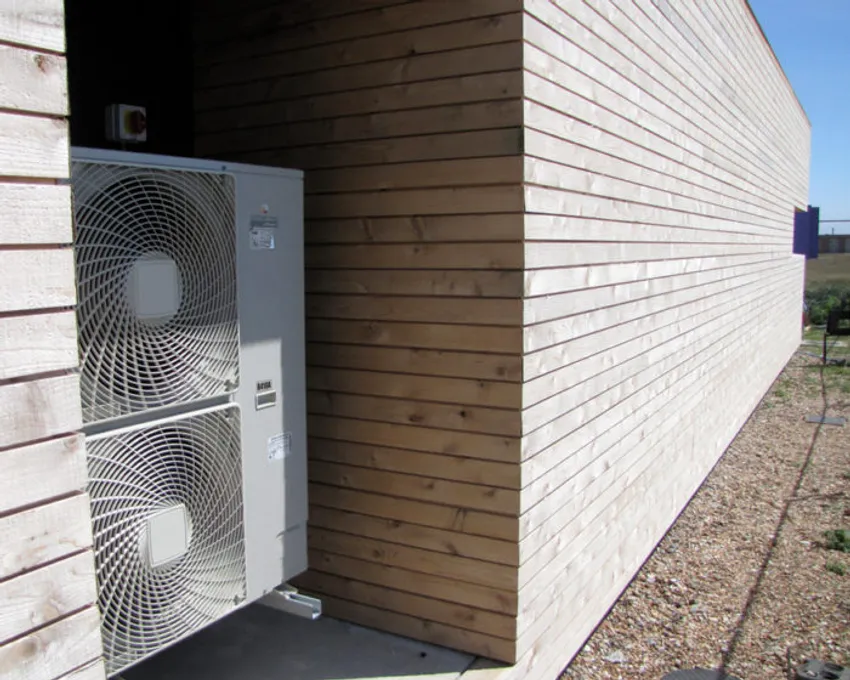
This is the sixth and final article in a series on replacing fossil-fuel furnaces with ducted heat pumps. At this stage, the equipment is installed and interconnections made: ductwork, wiring, refrigerant tubing, and condensate drains are all in place. If those things were done correctly, it’s possible to flip a breaker, open a couple valves, and walk away, leaving the customer with an operational system. But the work isn’t quite done. To realize the retrofit’s full comfort and environmental benefits—and avoid costly callbacks down the line—it is critical to test the system and make any adjustments necessary for peak performance. It is also important to train the customer on how to use and maintain their new system.
In larger commercial and institutional projects, it’s common to bring in a third-party engineer to make sure the system is correctly installed and operating as intended. In residential and light commercial work, it’s more common for the installers themselves to perform the commissioning.
A checklist is helpful
Commissioning involves two categories of checks: installation and operational. Installation checks verify that required components are present and installed according to manufacturers’ instructions. Operational checks confirm that the system—and its components—are working as they should.
A checklist provides prompts to ensure that no critical items are overlooked. Manufacturers include commissioning checklists in their installation manuals, and incentive programs like NYS Clean Heat have developed their own. While these checklists provide a useful starting point, you may want to customize them to reflect your company’s preferred practices and the strengths and weaknesses of your team.
Installation checks
Although commissioning is presented here as a separate step, it usually makes sense to perform checks throughout the installation process. If mistakes—for example, the incorrect placement of an outdoor unit—are…
Weekly Newsletter
Get building science and energy efficiency advice, plus special offers, in your inbox.

This article is only available to GBA Prime Members
Sign up for a free trial and get instant access to this article as well as GBA’s complete library of premium articles and construction details.
Start Free TrialAlready a member? Log in















6 Comments
This series has been amazingly insightful and helpful. Thanks, Jon!
I agree. It's so interesting I read it even though I'm unlikely to do anything similar.
Thanks Brian and Malcolm. It wasn't until I started writing that I realized just how many details are involved at every step of the process. Glad you found it worthwhile!
Jon--great series; I've been enjoying each installment. One additional point:
"Will the indoor fan run constantly or only when there is a call for heating and cooling? Constant fan flow improves filtration and room-to-room mixing (which can help dilute indoor CO2) but at the cost of increased energy consumption and noise."
Also, don't forget to remind your readers that constant fan flow will reduce dehumidification in cooling mode, due to re-evaporation of moisture on the indoor coil. If anyone wanted to dig into this more, Allison Bailes did a great job explaining it:
This Thermostat Setting Can Cost You Money and Make You Sick
https://www.energyvanguard.com/blog/this-thermostat-setting-can-cost-you-money-and-make-you-sick/
I've found that variable-capacity modulating heat pumps often end up with issues on summertime humidity control. The oversized coil (when running at part load) will be at warmer surface temperatures, and therefore reduce dehumidification.
Thanks, Kohta. These are great points. We need to make sure we are getting dehumidification right. In the Northeast, we have big parts of the year with little or no sensible cooling load but high needs for dehumidification. Sometimes I wonder if it makes sense to lean more heavily on dehumidifiers for latent removal, even during air conditioning season.
This series is a few years old and I really appreciate all of the information! My question is how do you locate a HVAC company that will employ all these practices? So far, none of the folks I've contacted through my energy company's referrals have mentioned any factors such as the ductwork needing attention -- even though it is all fully visible in our partially finished basement with glaring deficiencies -- let alone the new system needing maintenance. When I ask questions about building science principals I've learned here, I suddenly feel like I need to back off and dumb down based on the blank stares.
Log in or become a member to post a comment.
Sign up Log in